Editor’s Note: The following is the introduction and synopsis of Brookings Senior Fellow Michael O’Hanlon’s latest Marshall Paper, titled “Beyond NATO: A New Security Architecture for Eastern Europe” (Brookings Institution Press, 2017). You can buy the book here.
Finally, join O’Hanlon, Steven Pifer, and Torrey Taussig on Monday, July 31 at 10am for a live discussion on this and related topics.
Should the North Atlantic Treaty Organization continue to expand? An alliance of just 12 countries when it was created in 1949, NATO grew to 16 members by the end of the Cold War, and has added another 13 countries since then. This extremely successful security organization protected Europe in the Cold War, came to America’s defense after the 9/11 attacks, and then deployed a major mission to Afghanistan that continues to this day, among numerous other achievements. It has also helped new member states avoid conflict with each other, as with Greece and Turkey during much of the Cold War, and then consolidate democratic rule and civilian control of the armed forces during the period of post–Cold War expansion. It has also become a controversial organization in recent decades, with Russia increasingly objecting to its eastward growth. Great controversy and uncertainty now exist over whether it should someday expand to include not just the Baltic states, which joined in 2004, but other post-Soviet republics, as well, notably Ukraine and Georgia.
This history sets the context for an extremely important issue in U.S. foreign policy today. If the Trump administration is serious about its worthy goal of improving U.S. relations with Russia, how exactly can it do so? After all, Mr. Trump’s two immediate predecessors had similar hopes for a better rapport with Putin; both failed. President Trump himself is already using far tougher words toward Russia than he did as a candidate, and his national security team is generally hawkish toward the Putin regime in Moscow. Russia’s meddling in America’s 2016 elections further mars the situation.
Vladimir Putin and many of those around him are hard-edged autocrats, and there will likely be no easy way to put U.S.-Russian relations fully back on track as long as they are in power. But it may be possible to reduce the risks of rivalry and war by focusing on what may be, in Putin’s mind, the fundamental cause of the problem: NATO expansion. We do not owe the Russian strongman any apologies for the enlargement of the twenty-nine-member North Atlantic Treaty Organization to date. Nor should we abandon democratic friends like Ukraine and Georgia to Russian domination. However, there is likely a better way to help them than the current U.S.-led approach.
At present, we have, arguably, created the worst of all worlds.
At present, we have, arguably, created the worst of all worlds. At its 2008 summit, NATO promised eventual membership to Ukraine and Georgia, but it did so without offering any specificity as to when or how that might happen. For now, these two countries, as well as other eastern European neutral states, get no protection from NATO. Knowing of our eventual interest in bringing these nations into an alliance that he sees as adversarial, Vladimir Putin has every incentive to keep them weak and unstable so they will not become eligible for NATO membership. Ukrainian president Petro Poroshenko has been considering a domestic referendum on possible NATO membership; this further fuels the flames. We have inadvertently built a type of NATO membership doomsday machine that raises the likelihood of conflict in Europe.
It is time that Western nations seek to negotiate a new security architecture for those neutral countries in Eastern Europe today. The core concept would be one of permanent neutrality—at least in the formal sense of ruling out membership in a mutual-defense alliance, most notably NATO. The countries in question collectively make a broken-up arc from Europe’s far north to its south—Finland and Sweden; Ukraine and Moldova and Belarus; Georgia and Armenia and Azerbaijan; and finally Cyprus plus Serbia, as well as possibly other Balkan states. The discussion process should begin within NATO, and then include the neutral countries themselves; formal negotiations could then take place with Russia.
The new security architecture would require that Russia, like NATO, commit to help uphold the security of Ukraine, Georgia, Moldova, and other states in the region. Russia would have to withdraw its troops from those countries in a verifiable manner; after that occurred, corresponding sanctions would be lifted. The neutral countries would retain their rights to participate in multilateral security operations on a scale comparable to what has been the case in the past, even those operations that might be led by NATO. They could think of themselves and describe themselves as Western states (or anything else, for that matter). They would have complete sovereignty and self-determination in every sense of the word. But NATO would decide not to invite them into the alliance as members; ideally, they would endorse and promote this concept themselves as a more practical way to ensure their security than the current situation or any other plausible alternative.
Ideally, this architecture might be codified in treaty form and ratified by key legislative bodies, including, in the case of the United States, the U.S. Senate. It should be couched as of indefinite duration. If, someday, the world were to evolve to where a new security order also including Russia were possible, or if Russian politics and strategic culture evolved to the point where Moscow no longer objected, NATO (or a new organization) might expand further, but only after mutual agreement had been reached.
It is worth underscoring that the new security order would guarantee neutral states the right to choose their own form of government, political leadership, diplomatic relations, and economic associations. Notably, Russia would acknowledge the prerogative of those not yet in the European Union (EU) to join the EU (except for its security-related pledges), should that someday be of interest to them as well as current EU members.
To be sure, the concept of neutrality has not always worked out so well historically, as with the fates of Belgium and Holland in the world wars. In other cases, however, such as Switzerland and Austria, it has helped ensure the sovereignty of the neutral nations while also contributing to a more stable security environment in bordering regions.
NATO must not be weakened under the new paradigm. It has been, and remains, a remarkable organization.
NATO must not be weakened under the new paradigm. It has been, and remains, a remarkable organization. It did much to protect the security of democratic states and to preserve peace in Europe during the Cold War. It then successfully changed into a mechanism for stabilizing the post–Cold War European order thereafter, including in places such as Bosnia and, more recently, even distant Afghanistan. It also helped several former Warsaw Pact states and the Baltic states solidify their transition to post-communist polities.
NATO has worked hard on its relationship with Russia since the Cold War. It agreed not to station significant foreign combat forces on the territory of any of its members admitted since the Cold War ended. It also created mechanisms such as the North Atlantic Cooperation Council, the Partnership for Peace program, and the NATO-Russia Council to reach out in collegial and collaborative ways to Russia and other former members of the Warsaw Pact.
Yet this is an American, and Western, perspective. Russians in general do not share it. Whether most truly see NATO as a physical threat is a question, but many do see it as an insult—a psychologically and politically imposing former enemy that has approached right up to their border. Russia’s declining population and weak economy when contrasted with those of NATO states—roughly a $1.5 trillion GDP and less than 150 million people, versus a combined NATO total of $40 trillion with 900 million people—contribute further to Russia’s negative view of NATO. This critical attitude is found not only among Russia’s current president and older former Soviet apparatchiks, as well as Mikhail Gorbachev, the father of glasnost and perestroika, but even among many younger reformers. Putin’s sky-high popularity at home, partly a result of his crackdown on critics and competitors, is, nonetheless, also an indication of how strong anti-NATO sentiments have become in Russia.
While pursuing a new security architecture for the neutral states of Eastern Europe, NATO should stay strong and resolute in defense of existing members. The alliance is now stationing a total of some 5,000 troops—a modest force, more of a tripwire than a forward defense—in the Baltic states and Poland. Mr. Trump should signal his intention of sustaining America’s so-called European Reassurance Initiative even as he seeks to negotiate the new security system.
There is no guarantee, of course, that President Putin will prove interested in this idea. Putin may feel he is in an advantageous position to continue to try to weaken NATO, and the EU more generally, by stoking various conflicts, promoting and supporting extremist leaders in Western Europe, fomenting dissent in American politics, and generally keeping the major democratic powers guessing as to what will happen next. He may further conclude that the sanctions imposed on Russia over the Crimea and Donbas aggressions in Ukraine will weaken or dissipate, without any Russian action being necessary, as political forces and leaders change in the West. Putin may also welcome an ongoing standoff with the West for the additional excuses it provides him for his strongman behavior at home and his aggressiveness abroad.
The outcome of any effort to create a new security architecture is, therefore of course, uncertain but it should be attempted, nonetheless. Western leaders should pursue this path confidently and unapologetically, and not portray it as an admission of previous wrongdoing. If Russia refuses to negotiate in good faith, or fails to live up to any deal it might initially support, little will be lost and options for a toughening of future policy against Russia will remain. Indeed, a range of such responses should be developed in advance, including the possibility of expediting consideration of NATO membership for neutral states that are subsequently coerced or attacked by Russia. The hope, of course, is to avoid that. The current strategic situation involving most of the world’s great economies and several of its nuclear-weapons states in Europe is quite dangerous, and it will not become less dangerous if simply left on autopilot.
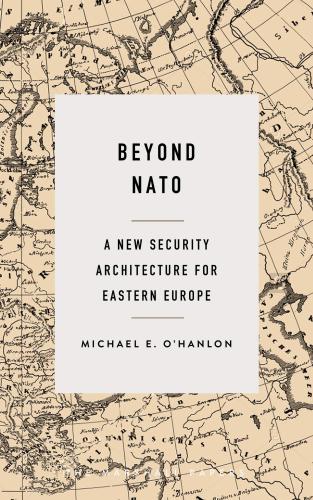
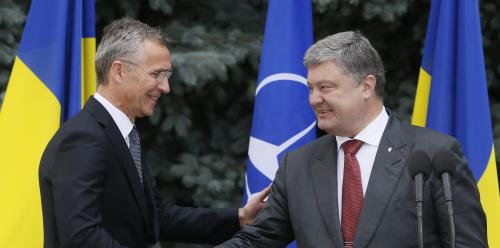
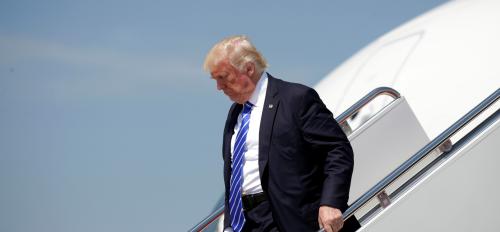
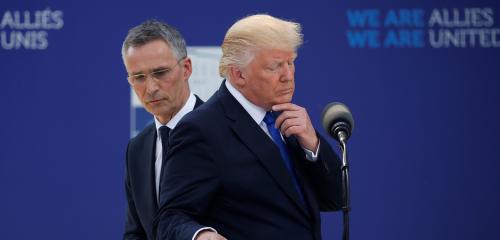

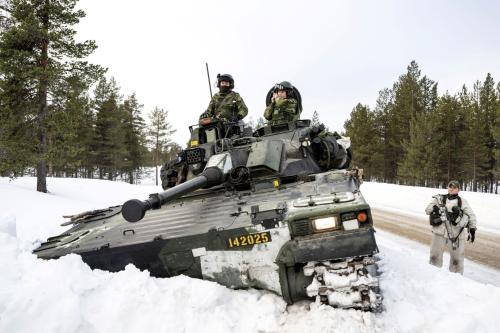
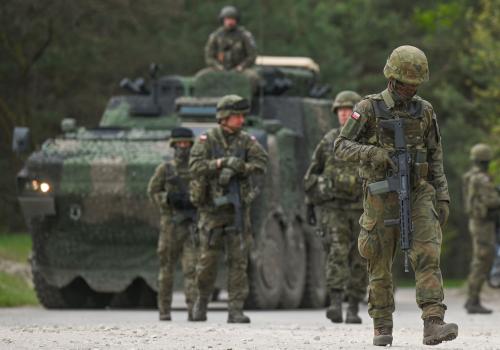
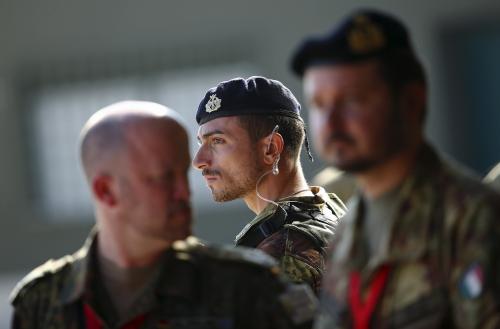
Commentary
Beyond NATO: A new security architecture for Eastern Europe
July 28, 2017